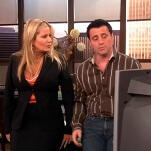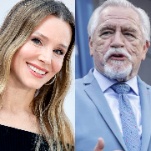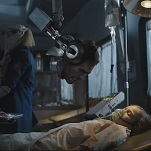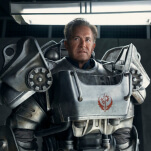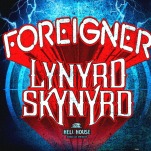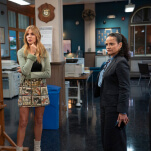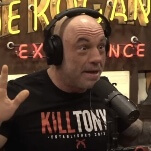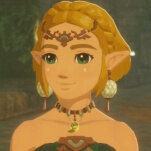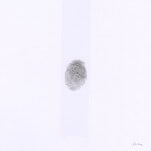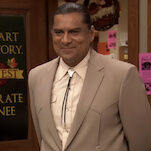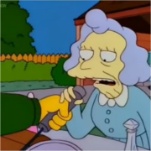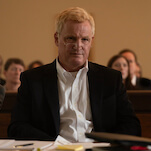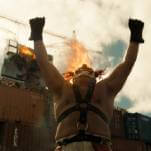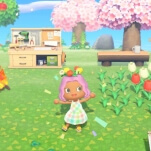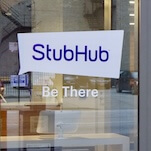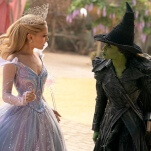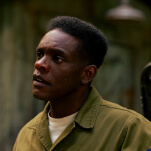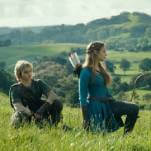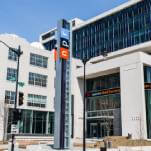Bob’s Burgers might never top the genius of its previous Halloween episode, last year’s transcendent “Fort Night.” That episode married the usual kid-centric comedy with genuinely gripping psychological horror, with the entire story woven around Halloween iconography. “Tina And The Real Ghost” can’t hope to top its predecessor as a pure Halloween episode, so it wisely aims for something different. Yes, the episode is set around October 31, but that only comes into play in the climax. The rest of the episode, with its focus on Ouija boards and Tina’s philandering ghost boyfriend, is appropriate for the season, but it could theoretically work as the plot of a normal episode just as easily. What elevates this episode is that it takes its ludicrous premise and lets all of the kids at Wagstaff Elementary respond to it in a way that’s true to them. There’s a feint toward more traditional Halloween horror in the third act of “Tina And The Real Ghost,” but the majority of the episode focuses on how a bunch of kids could invest so much in a box with the name “Jeff” written on it. And somehow, in true Bob’s Burgers style, it does so with as little mockery as possible. All right, yes, the show does go in for a little mockery of Tammy, Jocelyn, and Jimmy Jr., but in as nice a way as it reasonably can.
What’s so clever here is that the show doesn’t take the obvious course of action for a story like this. It isn’t because the kids are dumb that they believe Jeff is real. “Tina And The Real Ghost” doesn’t belabor the point, at least not until Tina’s lovely speech at the end, but the initial scene in the cafeteria lays out clearly why each kid would believe in Jeff. Zeke is the key here, as his brash skepticism is instantly replaced by brash faith the moment that Jeff reveals his fondness for soup. His sudden, unshakeable belief in the ghost invites the others to see whatever they need to. For Tammy, Jeff is a status symbol. For Jimmy Jr., he’s a new rival, the latest illustration that he cares not a whit about Tina just so long as he’s certain that nobody else cares about her either. For Jocelyn, believing in Jeff is just the latest way to conform and look cool.
The episode isn’t going for any deep psychological insights with any of these character beats. Indeed, the entire point here is that the work has already been done in establishing the Wagstaff kids so that these reactions are logically consistent with everything we already know about them. The show could have done this episode way back in the first season—I mean, allowing for the fact that Zeke and Tammy didn’t debut until year two—and it probably would have been plenty effective. But the story would have been far more arch, far more contrived than what we see here. We wouldn’t have known the supporting characters in enough detail to conclude anything other than that they believe because they are dumb. By season five, Bob’s Burgers has been consistent enough even in its handling of a minor character like Jocelyn that her portrayal here feels consistent with her behavior in, say, “Bob And Deliver.” Yes, she’s none too bright, but it’s a specific kind of silliness, one informed less by a natural lack of intelligence than by an ironclad belief that being smart is uncool, so she isn’t.
Zeke is the most fascinating case here. Go back to his early appearances in second season episodes like “The Belchies” and “Bad Tina.” He’s basically a one-joke character in those stories, a hyperactive loudmouth—some would say obnoxious, though I’ve always found Zeke hilarious—whom the show positions as Tina’s primary competitor for Jimmy Jr.’s attention. The show has since shaded in his character, positing a troubled working-class background—well, troubled enough to drive him to the occasional mad pooping—and hidden depths as a master chef. There’s a lot of pathos to how the show has developed Zeke, and his particular brand of cheerily articulated melancholy is on frequent display here.
These deep moments aren’t just in the meaning he takes from Jeff’s very existence: Consider the moment he observes that they are the big kids now, and in another few years they will all be married. But his sudden existential crisis—or, perhaps more accurately, his sudden non-crisis—is a wonderfully understanding exploration of what it might mean for someone to confront apparent hard evidence of life after death, and how such a discovery could reshape his life in an instant. It’s a unique way to play out what is otherwise a traditional ghost story—well, as traditional as one involving a teenage girl dating a box can reasonably be—and Zeke’s eventual breakdown in Jimmy Jr.’s arms hits just the right balance between funny, sweet, and oddly uplifting. Yes, it’s ridiculous that a couple dumb kids are trapped in a mausoleum, dealing with the non-existence of a ghost by reflecting on how they just have to make the most of the here and now. The show knows it’s ridiculous, as it wouldn’t ask Bobby Tisdale and H. Jon Benjamin to say those lines as those characters with those voices if this were primarily meant to be serious. But the show still gives us the option of engaging with the kids’ moment of truth on a more real level, and again that’s because Bob’s Burgers has taken the time to make these characters more than punchlines.
At this point, it feels almost unnecessary to say that Tina’s storyline is emotionally rich; given how much praise I’ve showered upon the character in past reviews, I’ll mostly just say that everything I said before about Tina’s strengths as a character hold true here, although I do have to give Dan Mintz special commendation for each new nuance he finds in Tina saying “Oh my God,” and his little sounds as Tina swats away the weird insects serve as perfect punctuation to Tina’s final speech. Where “Tina And The Real Ghost” does innovate in its handling of the Belchers is in the relationship between Tina and Louise. The show doesn’t make a big deal out of it, but Louise genuinely cares about Tina’s wellbeing here in a way that she rarely does in other episodes; she needs no cajoling to feel bad for the heartbroken Tina, and she even resists Gene’s demands to go trick-or-treating so that she can exact just revenge on the kids who so cruelly mistreated her sister. (Well, more so than Louise cruelly mistreated her with the whole fake ghost boyfriend thing.)
Kristen Schaal layers in a touching amount of respect into Louise’s interactions with Tina in the mausoleum. For once, Louise appears to look upon her sister as an equal, someone just as capable of absurdly baroque vengeance as she is. More than that, Louise admires the strength Tina shows in not letting her sadness get the best of her. This may just be a one-time thing, but here again is the great advantage of a show paying attention to its characters over five seasons: Even the tiniest tweak can push the characters in unexpected directions, and that break from the norm is immensely satisfying. “Tina And The Real Ghost” is Bob’s Burgers finding new ways to explore its kid characters and their relationship dynamics, and all it needs to get that process started is one very cool ghost in a shoebox.
Stray observations:
- Hey, Bob has a plotline too! And The Wire’s Andre Royo makes his second appearance on the show, this time as a terrified exterminator. Don’t take the fact that I relegated this subplot to the strays as any knock against it: It’s a fine Bob story, albeit a fairly standard one. But considering we didn’t get any restaurant at all last week, I’m fine with a standard one.
- I appreciate that Louise only knows Drive as a major motion picture trailer. Also, Gene went all out with that Turner and Hooch costume.

